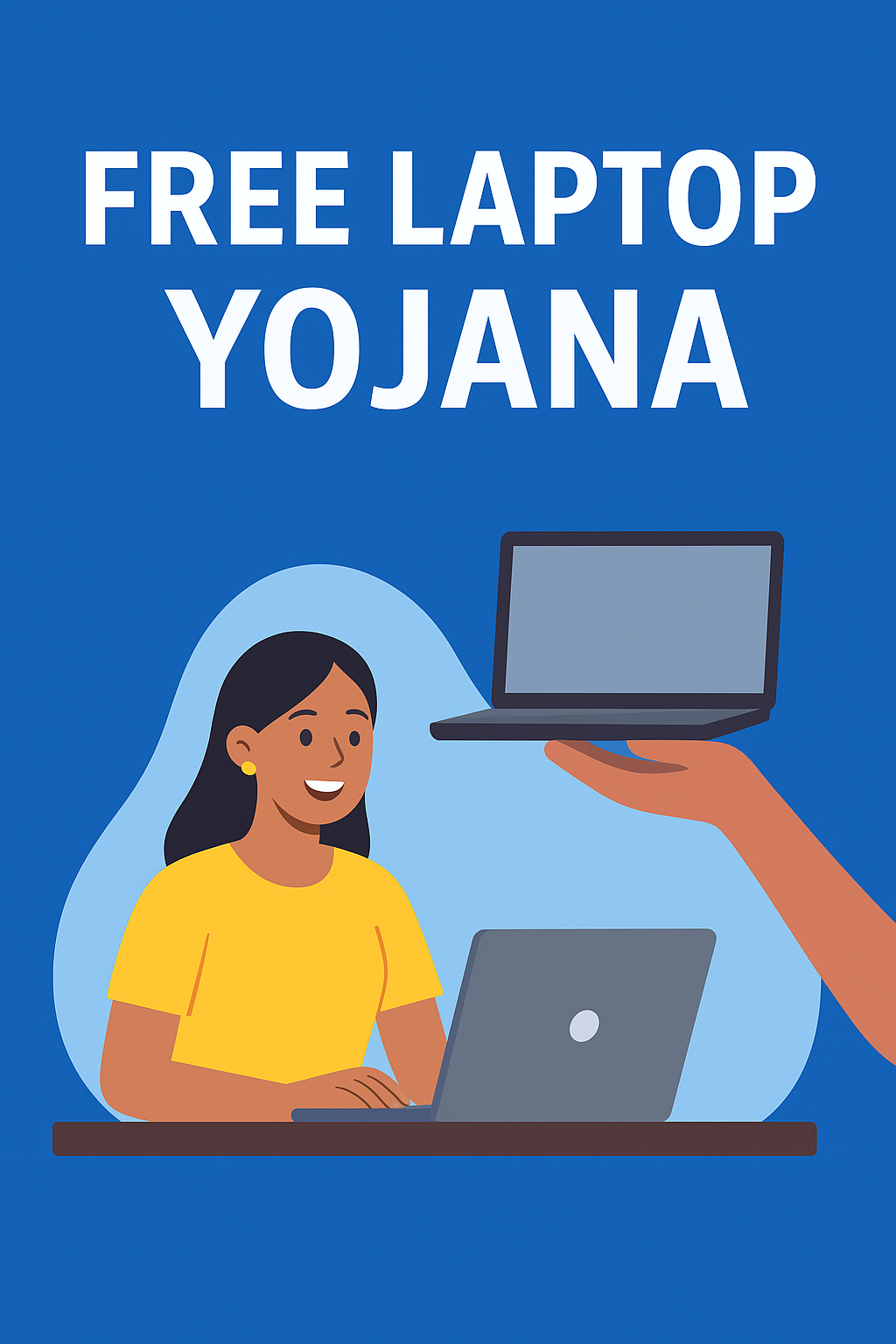
In India, access to digital resources remains a significant challenge, especially for students from underprivileged and rural backgrounds. With the growing importance of online learning, digital literacy, and technical skills, having access to a laptop is no longer a luxury—it is a necessity. To bridge this gap, both central and state governments introduce schemes like the Free Laptop Yojana, aimed at providing laptops or financial assistance to deserving students.
This blog will explain in detail what the Free Laptop Yojana is, its objectives, eligibility, benefits, application process, challenges, and its overall impact on the future of education in India.
What is Free Laptop Yojana?
Free Laptop Yojana is a Government (sometimes state government) scheme for giving free laptops or money that can be spent on buying a new laptop to eligible students. The project is meant to promote digital literacy, foster e-learning and reinforce technic al-knowledge among students who cannot afford these devices independently.
Examples:
- Madhya Pradesh Laptop Supply Scheme: The state offers financial aid of ₹25,000 to Class 12th meritorious students to help them in buying laptops.
- Tamil Nadu Free Laptop Scheme: Millions of laptops have been distributed to college-going students in Tamil Nadu state for digital education.
- Programs for differently-abled students: In some states like Andhra Pradesh, the government provides free laptops to visually challenged/physically challenged aid (while a student is studying) recipients.
Objectives of Free Laptop Yojana
- Promote Digital Inclusion – All students can access online education, e-libraries and digital platforms regardless of their economic status.
- Enhance Learning Quality – Laptops enable access to online courses, research, projects and skill training.
- Reduce Financial Burden – Families in economic hardship also benefit as the cost of laptops is borne by the government.
- Skill Development – Students can learn digital and technical skills that help them get better jobs.
- Future-Ready Education – Laptops open the doors to online certification programs, MOOCs, virtual classes and digital collaboration.
Eligibility Criteria
Eligibility criteria vary by state and program, but here are the basics:
- Academic Qualification: Class 10 or 12 with an average percentage (70% plus on most accounts).
- Family Income: Mostly for the students belonging to EWS, BPL or with a family income limit as per defined.
- School/Board of Study: Some plans are only applicable to the students studying in government school or recognized boards.
- Special Provisions: Some states give preferences to persons with disabilities.
- One-off benefit: They are limited to using the scheme only once.
Application Process
The process might differ state by state but, broadly speaking, here’s how you can do it.
- Check Official Notification: Access the official education department website or government portal itself for scheme availability.
- Verify Eligibility: Make sure you qualify marks, income and school eligibility requirements.
- Fill Application Form: Apply on line/off line by filling in name, School /College Examination passed, marks or percentage obtained and family income.
- Prepare Documents:
- Mark sheet (10th/12th)
- Income certificate
- Aadhaar card
- Bonafide certificate from school/college
- Disability certificate (if applicable)
- Mark sheet (10th/12th)
- Submit Application: Apply and send the form along with your documents before the closing date.
- Verification & Selection: Applications are screened by officials and selected students are notified.
- Distribution: Some schemes transfer funds to bank accounts (like MP’s ₹25,000 support) while others provide laptops issued by the government.
Recent Schemes & Highlights
- Madhya Pradesh Laptop Supply Scheme: ₹25,000 support for Class 12 meritorious students.
- Tamil Nadu Government Scheme: About 20 lakh laptops distributed to students for higher education or technical training.
- Andhra Pradesh Disabled Students Scheme: Free laptops for visually impaired and differently-abled students.
Challenges Faced by Free Laptop Yojana
- Lack of awareness.
- Documentation mistakes, like bank account errors.
- Fake news and viral scams (e.g., Free Laptop Scheme 2025, flagged by PIB).
- Outdated specifications in distributed laptops.
- Delivery delays, warranty and maintenance issues.
Suggested Improvements
- Better Awareness Campaigns – School, college, and village-level information drives.
- Streamlined Verification – Simplified but strict process to reduce errors.
- Financial Aid Instead of Laptops – Allow students to buy quality devices instead of outdated ones.
- Technical Support Centers – District-level centers for repairs, upgrades and warranty.
- Transparency & Monitoring – Real-time tracking system with public beneficiary lists.
Impact of Free Laptop Yojana
- Helps rural students engage with global knowledge.
- Supports preparation for exams and online courses.
- Promotes digital literacy at grassroots level.
- Encourages students to pursue careers in technology and innovation.
Conclusion
The Free Laptop Yojana is a massive effort to bridge the Indian educational gap by promoting digital literacy. It gives access to modern education, strengthens equality, and builds future-ready citizens.
But, its success depends on awareness, transparency, device quality and continuous support. If implemented properly, Free Laptop Yojana can transform education in India and empower millions of students to thrive in the digital era.
